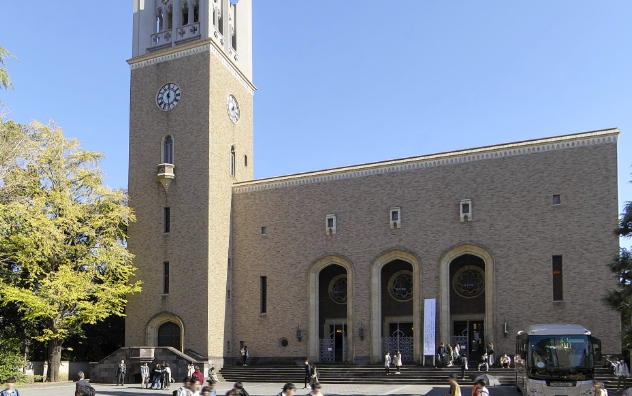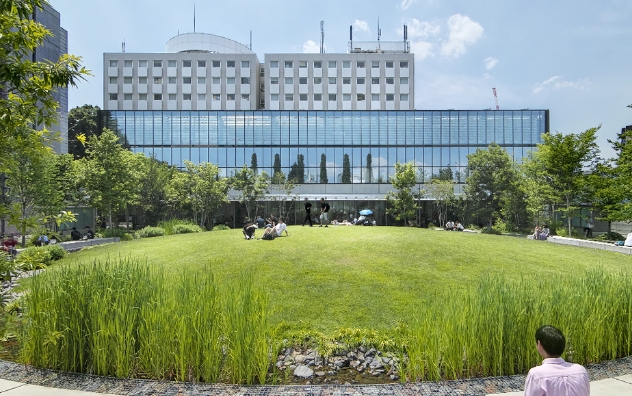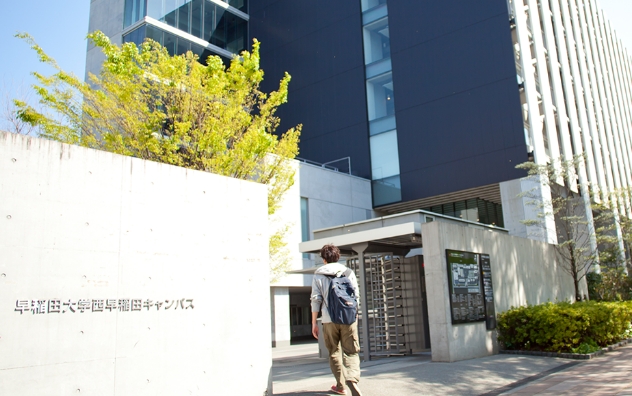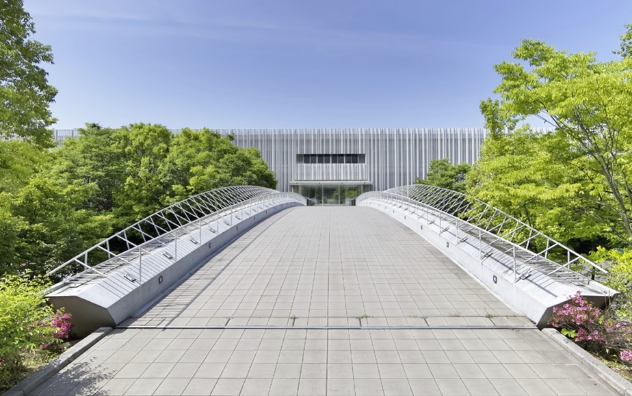Honoring 100 years since the death of Shigenobu Okuma, founder of the University / Part 3
Thu, Mar 10, 2022-
Tags
Honoring 100 years since the death of Shigenobu Okuma
January 10, 2022 marks 100 years since the death of the founder of Waseda University, Shigenobu Okuma. As the first part of a three-part series, we explore the life of a man, both politician and educator, and how his history ties into the legacy of Waseda.
Part 1: Supporting the school from the shadows (1881-1897)
Part 2: Building the Foundation for the University (1898-1913)
Part 3: Staying ambitious to the end; education is a lifelong endeavor
In April 1914, Shigenobu Okuma returned to politics and became the Prime Minister and the Minister of Home Affairs (the Second Okuma Cabinet). In August 1915, he was appointed the Prime Minister and the Minister of Foreign Affairs after a Cabinet reshuffle. Sanae Takata, President of the University at the time, was appointed Minister of Education. In the same month, Takata resigned from the post of President of the University to take up the post of Minister of Education and began to engage in the reformation of the education system under Prime Minister Okuma. In September, he compiled “university ordinance guidelines” and consulted the Education Research Committee (Kyoiku Chosakai), an advisory panel to the Ministry of Education, regarding the matter. The university ordinance guidelines stated that private universities, which were not officially recognized as universities under law, should be officially recognized, and that women, who were not allowed to enter universities at the time, should be admitted too.
However, the Okuma Cabinet resigned en masse in October 1916, when the deliberation on Takata’s university ordinance guidelines was being delayed in the face of opposition. Thus, the guidelines were never implemented. Nevertheless, private universities were approved by the University Order promulgated in December 1918. In the opening ceremony in April 1919, Okuma addressed students as follows:
“I am convinced that our Waseda University will become a university under the University Order sooner or later; in fact, during the current year. This is simply a matter of formality. However, formality should not be disdained. Formality will foster the school’s competitive spirit. We will compete with imperial universities and other universities. (…)
Afterward, we will compete with Cambridge, Oxford, as well as universities in France, Germany, and other places with advanced world cultures. We are in the process of preparation. Your current situation and that of Waseda University are the same. You have not yet graduated. You are now striving to compete. You are taking the first step toward competing with the best universities in the world.”
< Collection of Shigenobu Okuma Speeches (Iwanami Bunko) pages 148-149 >
Okuma established a preparatory committee for implementing the University Order in June 1919 to make the University legally recognized by changing the internal regulations and reorganizing faculties and departments. However, funding was a major challenge. Under the University Order, private universities were required to deposit a portion of their assets with the government for university operation. This amount was 500,000 yen per university, with extra 100,000 yen for the addition of each faculty. Waseda sought to begin with five faculties: political science and economics, law, letters, commerce, and science and engineering. Thus, the University had to deposit a total of 900,000 yen. This was an enormous amount, considering the annual tuition was 50 yen in 1918 (60 yen for science and engineering).
Additionally, another 600,000 yen was needed to establish Koto Gakuin (senior high school). Thus, the University sought donations to a university fund with a target amount of 1.5 million yen. Many prominent figures from the business world, including Koyata Iwasaki, Hachiroemon Mitsui, and Toranosuke Furukawa, contributed to the fund, resulting in a total of 1,018,980 yen by the spring of 1920. In April 1920, Okuma held a luncheon at his residence in conjunction with the opening ceremony of Koto Gakuin, and thanked the donors, fund trustees, university supporters, and others who had contributed to the establishment of the University.
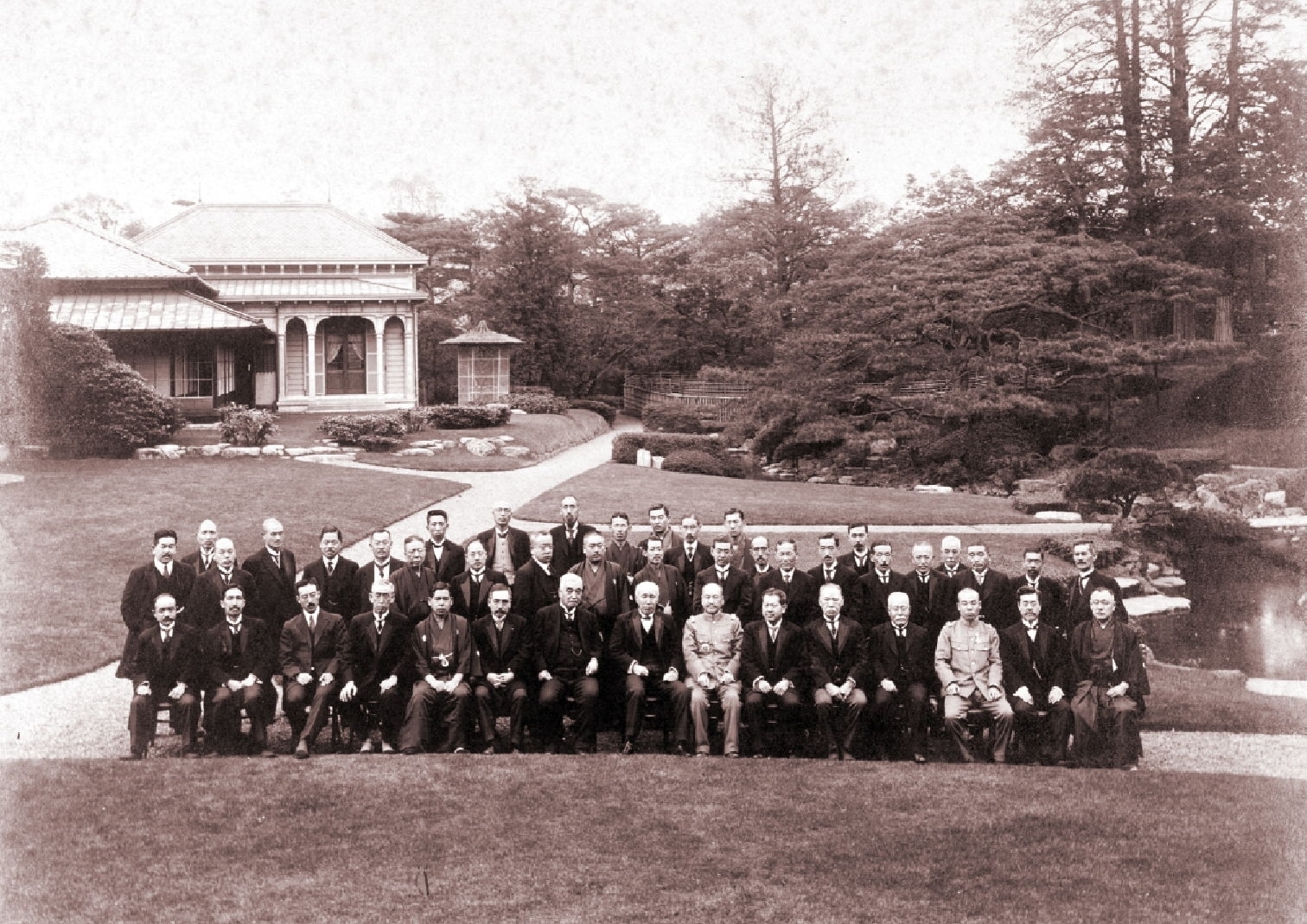
Guests invited to the opening ceremony of Koto Gakuin (Okuma’s residence) (April 1920) : Waseda University Archives
Thus, in February 1920, Waseda University was recognized as a university under the University Order, and could compete equally with imperial universities, as envisioned by Okuma. However, Okuma’s health started deteriorating the following year, and he began to require complete rest by the autumn. By the end of 1920, his condition worsened and he was diagnosed with ruptured prostate cancer.
When Okuma’s serious condition was reported, people from all walks of life offered their sympathy. More than 1,000 telegrams and letters were delivered, including those from Taisho Emperor and Empress, prominent figures in the political and business world, and ordinary citizens. On January 8, 1922, about 1,000 Waseda students gathered at Ana Hachimangu Shrine to pray for Okuma’s recovery. The students then went directly to the Okuma residence and handed the shrine’s charm to his son-in-law Nobutsune Okuma. When Nobutsune handed the charm to Okuma, who was in critical condition, he was moved and expressed his gratitude.
Despite the students’ prayers, 83-year-old Okuma passed away two days later, on January 10, 1922. The funeral was held a week later on January 17 at Hibiya Park. It was open to the public as the first “national funeral,” following the example of former British Prime Minister William Gladstone’s funeral, with over 300,000 people attending it. About 20,000 students from the University, affiliated schools, and Japan Women’s University, which Okuma helped establish, formed a procession and marched from the Okuma residence to Hibiya Park to attend the funeral.

Shigenobu Okuma’s national funeral and the participants (January 1922) Waseda University Archives
The last speech by Okuma was in front of students at the opening ceremony in April 1921. Okuma said:
“Why are you studying? Ultimately, this is competition. It is all about trying not to be defeated by others. (…) I will not lose my aspiration until I die. When I lose my drive, I will die. I must continue to study for the rest of my life as long as I have the strength to do so. If you continue to study, you will be able to do the things later in life that you could not do before. It seems that I am gradually progressing. The Okuma of this year is more knowledgeable than the Okuma of last year. Thus, I will become even more knowledgeable next year. General education is a lifelong endeavor.”
< Collection of Shigenobu Okuma Speeches (Iwanami Bunko) page 165>

Opening ceremony in the 10th year of Taisho (President Shigenobu Okuma’s address) (April 1921) : Waseda University Archives
Sanae Takata visited Okuma one month before his death. Okuma told him, “As the day of my death approaches, I must study death. If I get better even just a little, I will start researching death.” (Sanae Takata, Hanpo mukashi banashi [Hanpo old stories] page 649). Okuma stayed ambitious and kept studying until the end. His spirit, and the words he left behind, still live on in Waseda University, even 100 years after his passing away.
Satoko Tanaka / Research Associate, Waseda University Archives
- Links
-
- Waseda University Cultural Resource Database
- Honoring 100 years since the death of Shigenobu Okuma, founder of the University Part 1: Supporting the school from the shadows (1881-1897)
-
Honoring 100 years since the death of Shigenobu Okuma, founder of the University Part 2:
Building the Foundation for the University (1898-1913)


